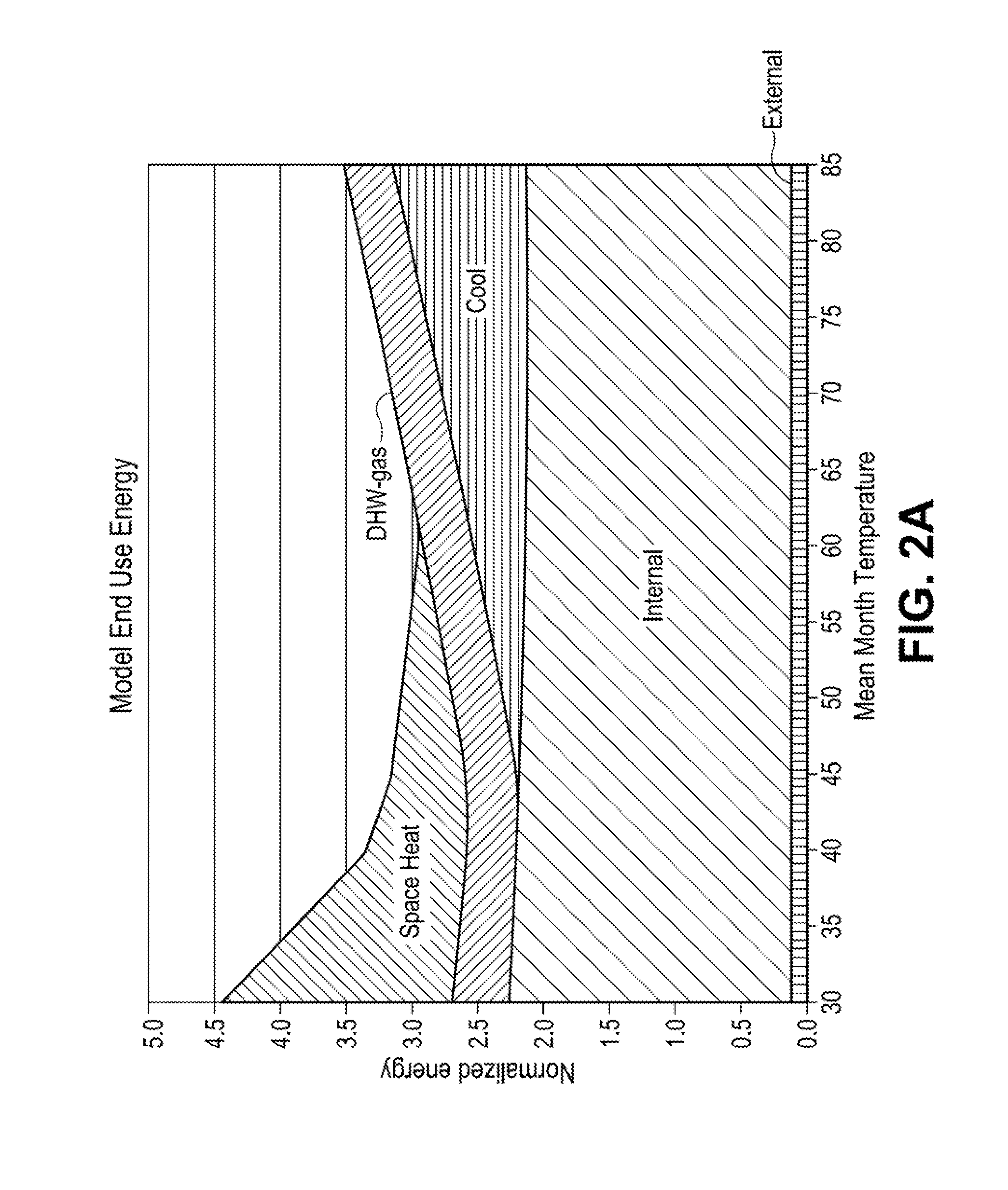Energy-saving measurement, adjustment and monetization system and method
a technology of energy-saving measurement and adjustment, applied in the field of energy-saving measurement, adjustment and monetization system and method, can solve the problems of not being able to represent any physical or operational changes in the performance of the site going forward, unable to accurately and crediblely quantify future energy use,
- Summary
- Abstract
- Description
- Claims
- Application Information
AI Technical Summary
Problems solved by technology
Method used
Image
Examples
Embodiment Construction
[0021]Embodiments of the invention adhere to the principles of the International Performance Measurement and Verification Protocol (IPMVP) while incorporating three significant enhancements to the IPMVP-adherent process, which makes it much more robust. Two such enhancements are the result of the use of the analog building model (also referred to herein as an ‘analog facility model’, or ABM), which is a combined physical / statistical model based on measured energy use and coincident temperature data:
(1) the ABM provides a singular fit to the data that is constrained by physical laws as well as mathematics and is therefore uniquely representative of the actual building, and
(2) the process allows the disaggregation of the energy use into component end-uses (heating, cooling, etc.) that aids in both initial diagnoses and in adjusting for non-routine changes in the building over time. A third enhancement is the incorporation of statistical uncertainty in the estimation of savings which p...
PUM
 Login to View More
Login to View More Abstract
Description
Claims
Application Information
 Login to View More
Login to View More - R&D
- Intellectual Property
- Life Sciences
- Materials
- Tech Scout
- Unparalleled Data Quality
- Higher Quality Content
- 60% Fewer Hallucinations
Browse by: Latest US Patents, China's latest patents, Technical Efficacy Thesaurus, Application Domain, Technology Topic, Popular Technical Reports.
© 2025 PatSnap. All rights reserved.Legal|Privacy policy|Modern Slavery Act Transparency Statement|Sitemap|About US| Contact US: help@patsnap.com



